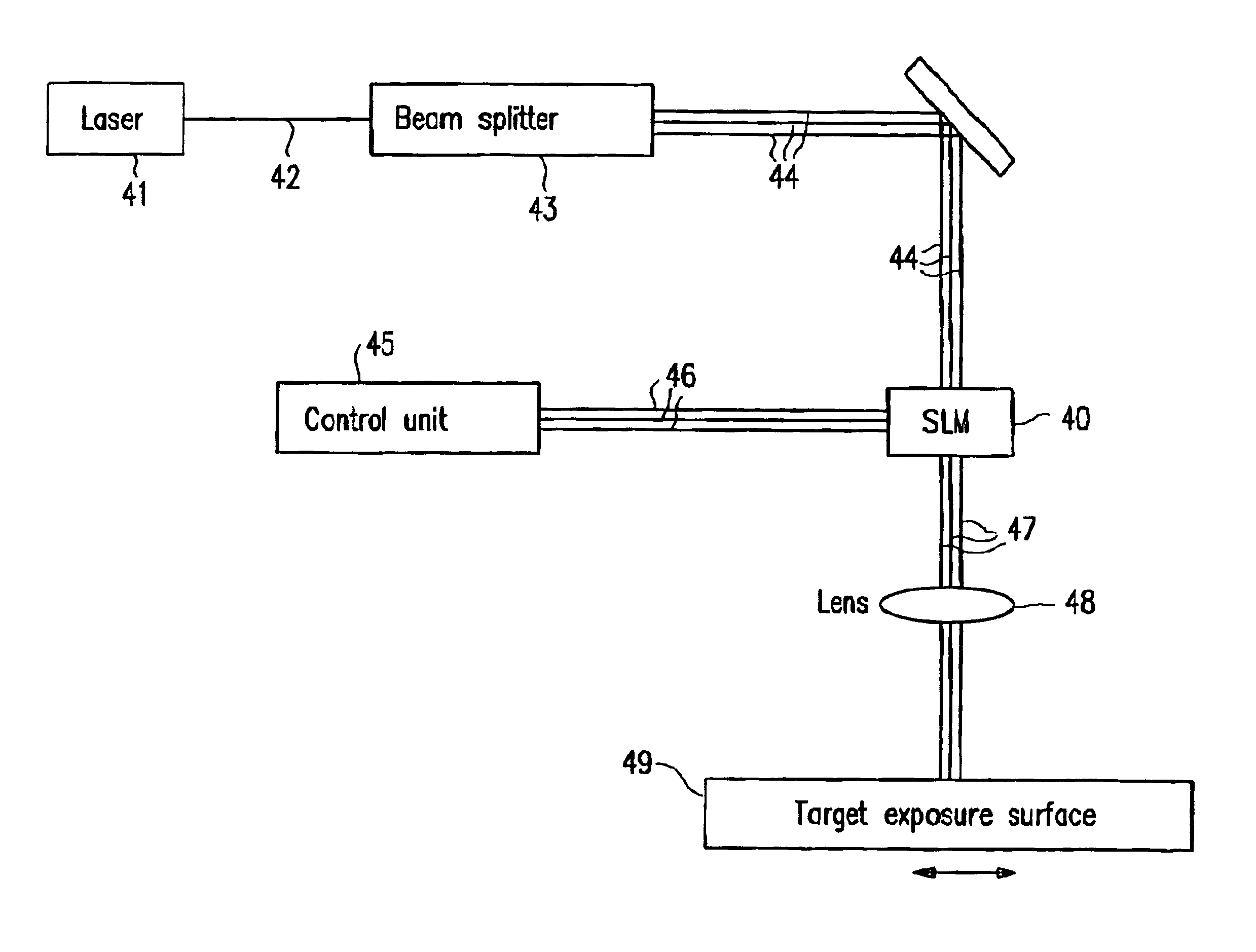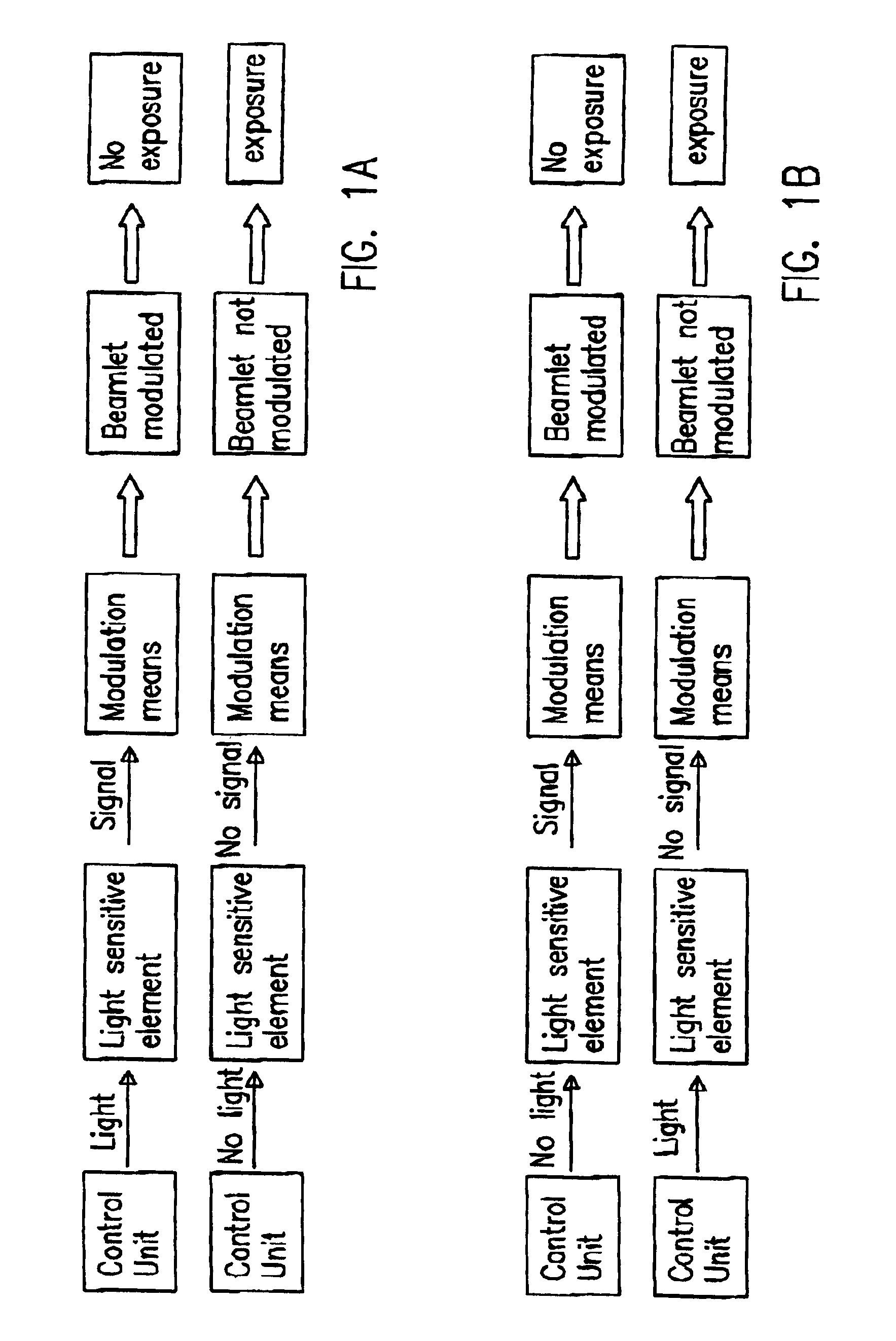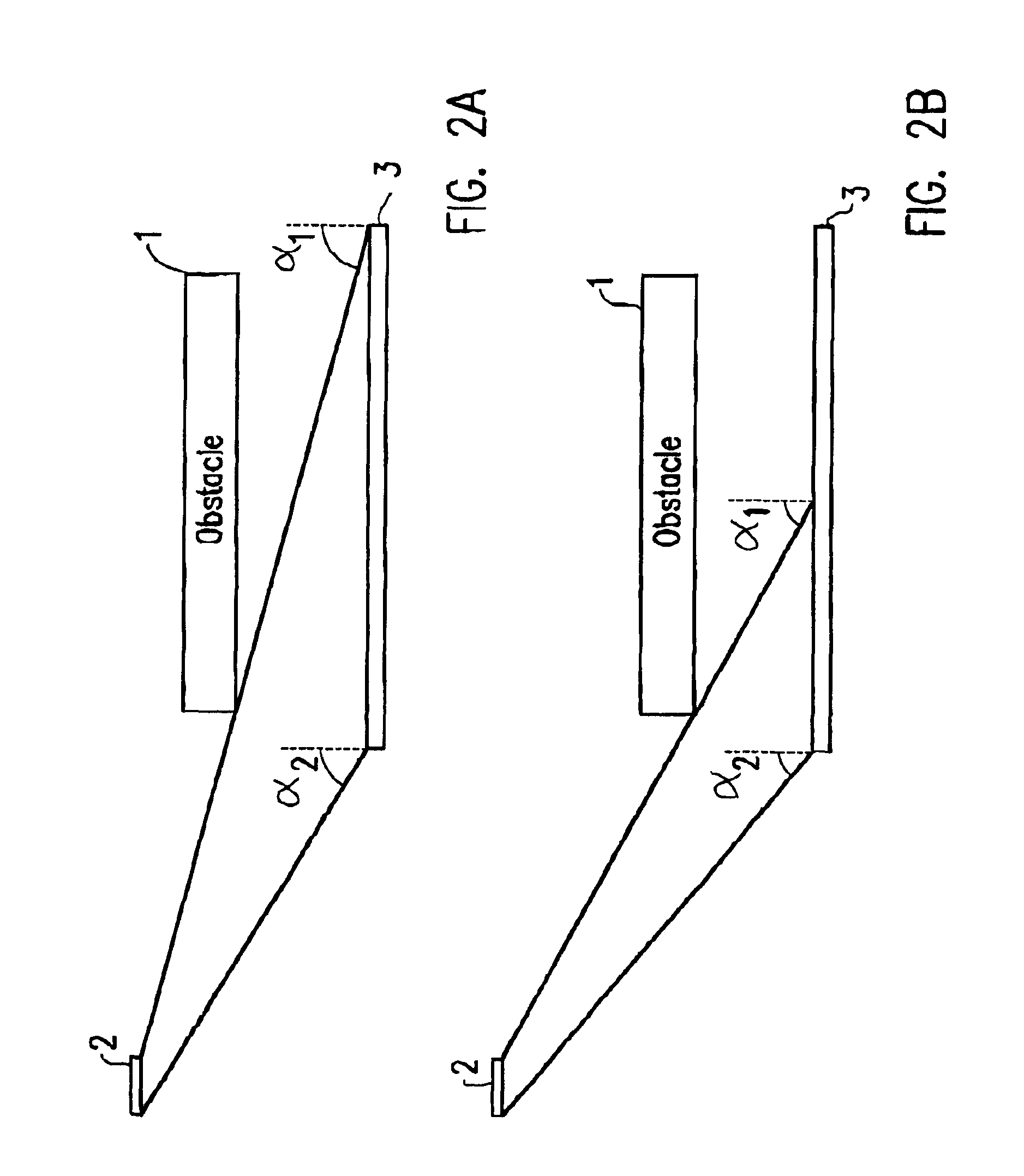Lithography system
- Summary
- Abstract
- Description
- Claims
- Application Information
AI Technical Summary
Benefits of technology
Problems solved by technology
Method used
Image
Examples
example 1
Maskless Electron Beam Lithography System (FIG. 10)
[0113]In the maskless electron beam lithography system used in this example, the system comprises an aperture plate comprising electrostatic deflectors 21 to deflect incoming electron beamlets 22 passing through the apertures 23. This plate will be referred to as the beamlet blanker array 24. When the electron beamlets 22 have passed the beamlet blanker array 24 they will reach a second aperture array (beam stop array) 25 on which their trajectory will terminate when they are deflected.
[0114]The modulation concept of this lithography system is shown in FIG. 10. Incoming electron beamlets 22 are projected on the beamlet blanker array 24. The positions of the electron beamlets 22 correspond to the positions of the apertures 23 in the plate 24. The beamlet blanker plate 24 comprises a deflector element as modulation means. In this example said deflector element comprises an electrostatic deflector 21. Depending on the received informat...
example 2
Maskless Optical Lithography System (FIG. 13)
[0116]The maskless lithography system in this example comprises a spatial light modulator (SLM) 40. Maskless lithography systems using an SLM are in a general way disclosed in WO0118606. The SLM comprises an array of mirrors, which reflect the incoming light beams in such a way that the beam eventually is blanked or transmitted. An example of such an SLM is a deformable mirror device (DMD). A DMD is controlled in the same way as the electrostatic deflector array shown in the first example. The modulation signals couple into the system from the back or from the side.
[0117]One configuration is a backside control of the modulation. By providing the backside of each mirror with a light sensitive element, the control can be done with the use of the same optical carriers as mentioned before. Probably the use of free space optical interconnects is the most convenient option.
[0118]A schematic drawing of the operation is shown in FIG. 13. A laser ...
PUM
 Login to View More
Login to View More Abstract
Description
Claims
Application Information
 Login to View More
Login to View More - R&D
- Intellectual Property
- Life Sciences
- Materials
- Tech Scout
- Unparalleled Data Quality
- Higher Quality Content
- 60% Fewer Hallucinations
Browse by: Latest US Patents, China's latest patents, Technical Efficacy Thesaurus, Application Domain, Technology Topic, Popular Technical Reports.
© 2025 PatSnap. All rights reserved.Legal|Privacy policy|Modern Slavery Act Transparency Statement|Sitemap|About US| Contact US: help@patsnap.com



